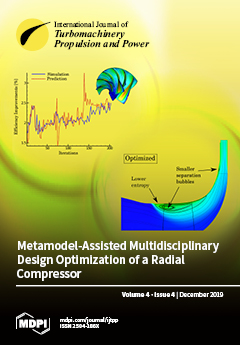Open AccessArticle
Turbine Cascades of Last Stage Blades for Wide Range of Operating Conditions
by
Ondrej Novak, Marek Bobcik, Martin Luxa, Jaroslav Fort, Bartolomej Rudas, Jaroslav Synac, David Simurda, Jiri Furst, Jan Halama, Vladimir Hric, Jaromir Prihoda and Zdenek Simka
Cited by 3 | Viewed by 2568
Abstract
Recent trends in the electric energy market such as biomass, waste incineration or combined cycle power plants require innovative solutions in steam turbine design. Variable operating conditions cause significant changes in flow field surrounding the steam turbine last stage blades. Therefore, the enlargement
[...] Read more.
Recent trends in the electric energy market such as biomass, waste incineration or combined cycle power plants require innovative solutions in steam turbine design. Variable operating conditions cause significant changes in flow field surrounding the steam turbine last stage blades. Therefore, the enlargement of operating range for last stage blades presents new challenges in design of turbine cascades. Several turbine cascades were designed and analyzed by commercial and in-house software of CTU Prague. Selected profiles were experimentally validated in the high-speed wind tunnel for 2D cascade measurements of the Institute of Thermomechanics of the Czech Academy of Sciences which is equipped by an adjustable supersonic inlet nozzle, perforated inserts at side walls and adjustable perforated tailboard. Comparisons are presented of numerical results with optical and pneumatic measurements for a wide range of inlet and outlet Mach numbers for optimized hub and tip profile cascades.
Full article
►▼
Show Figures





